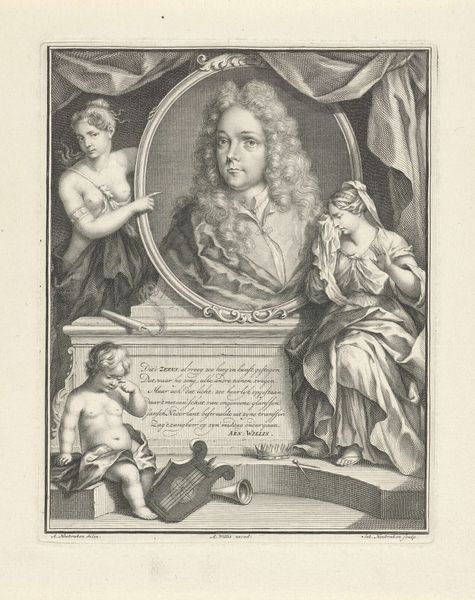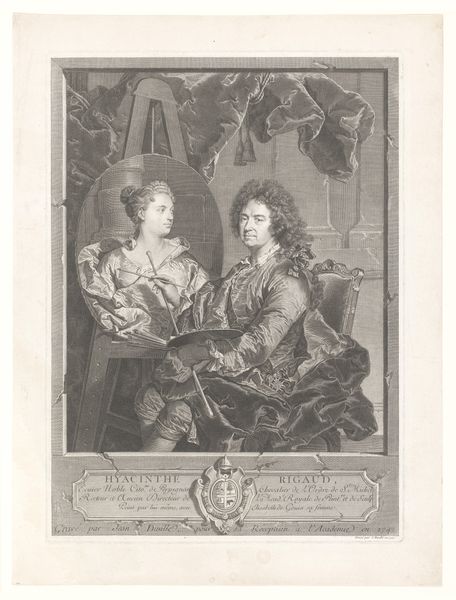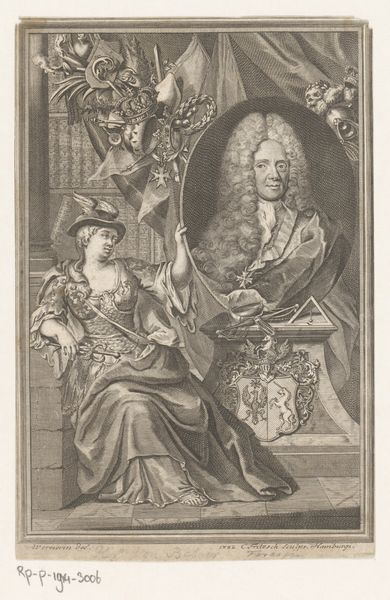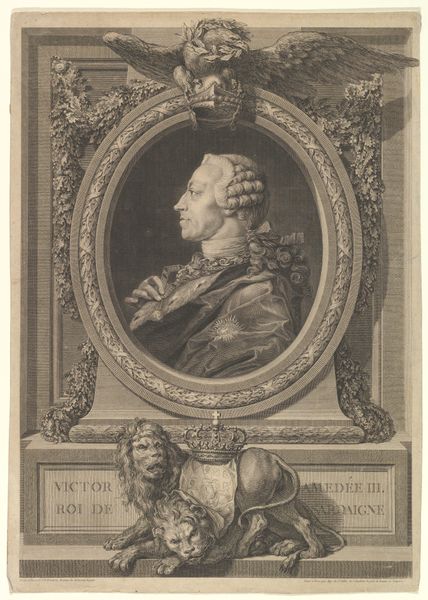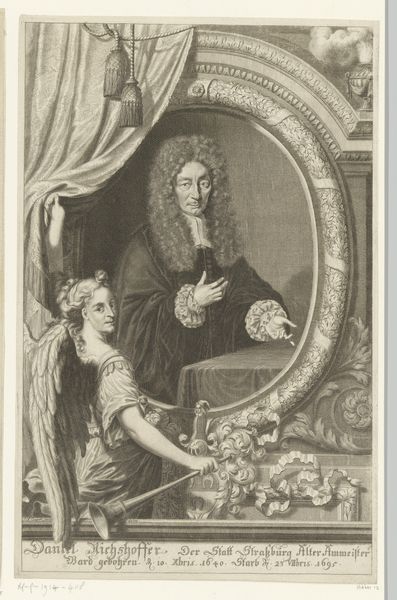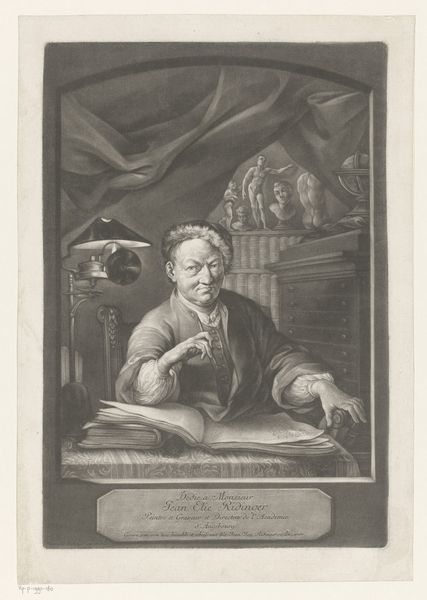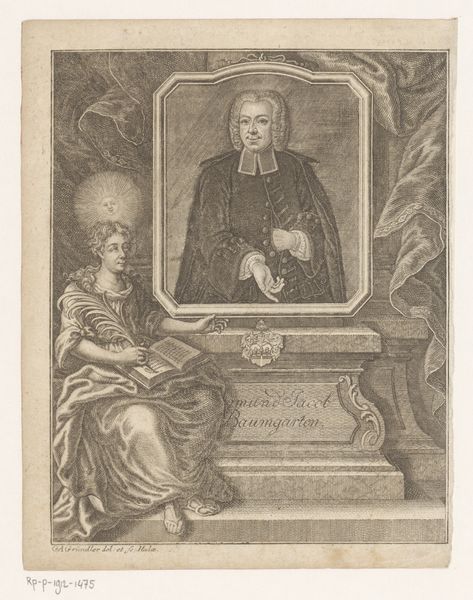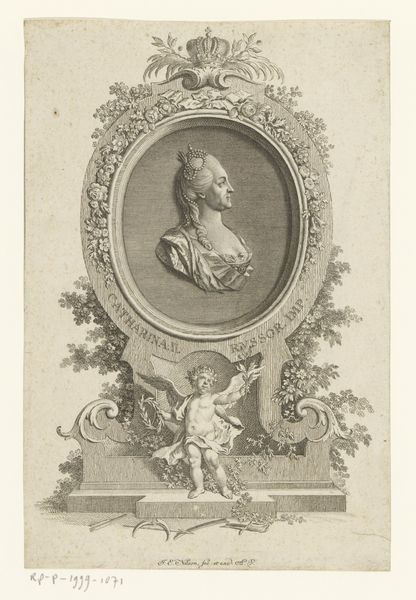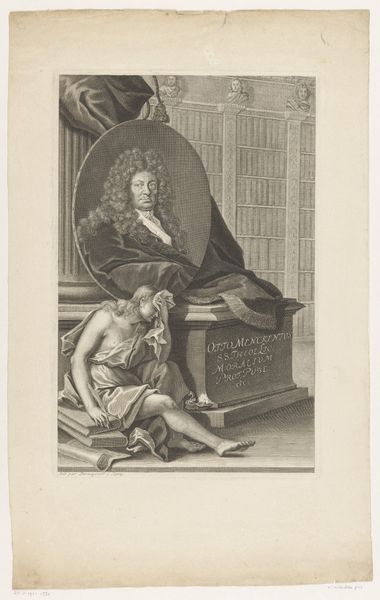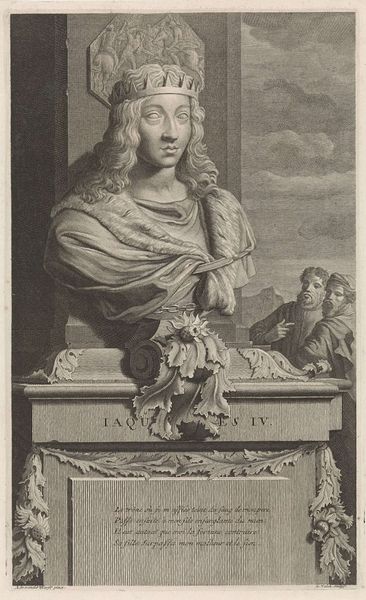
engraving
#
portrait
#
baroque
#
history-painting
#
engraving
Dimensions: height 188 mm, width 136 mm
Copyright: Rijks Museum: Open Domain
Editor: So, this is "Bustes van Gérard de Lairesse en Albert Flamen" made before 1729 by Arnold Houbraken. It's an engraving. It's interesting how the image is framed by all these animal vignettes. What strikes me is the juxtaposition of the two artists depicted and the suggestion of their artistic process through the objects in the engraving. What’s your take on it? Curator: Well, look closely at this print. As a materialist, I'm interested in the production. Engraving allows for multiplication, for distribution. Who was the audience for this? Not just the wealthy who could commission paintings, but a potentially broader segment of society engaging with artistic ideas through printed images. It collapses that traditional hierarchy, doesn't it? Editor: It does, that's a really interesting point. I guess engravings were like an early form of artistic accessibility. What do you think the vignettes with the sheep add to our understanding of the piece? Curator: Consider the labor involved. Think about where wool comes from, how it’s transformed, the trades and skills supporting its presence within a fine art context, seemingly so divorced from its origin. Then think about how the printmaking process similarly requires particular types of paper and ink, derived from plants and minerals. It draws attention to the layers of material transformation involved in art making. How the pastoral scene plays in contrast with the portraits of celebrated artists! What social structures uphold the art world here? Editor: That’s a lot to unpack! I never thought about the raw materials of art in that way. Thanks, this was so insightful! Curator: Indeed! Considering art as a product of labor, of specific social and material conditions, changes how we understand its value and its accessibility, doesn’t it?
Comments
No comments
Be the first to comment and join the conversation on the ultimate creative platform.


